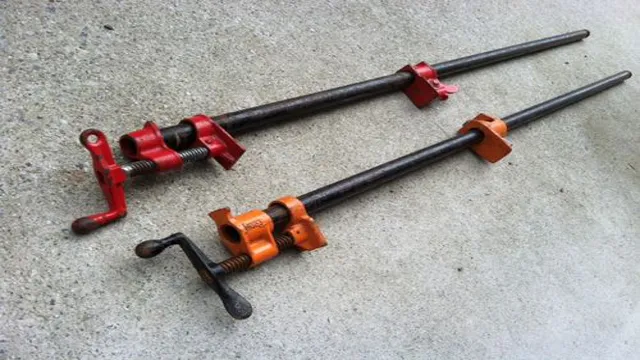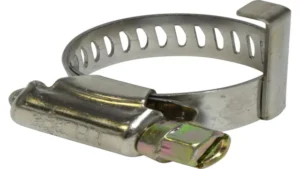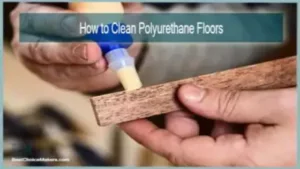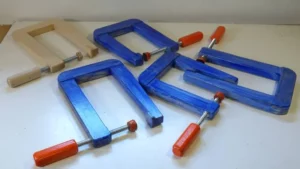Have you ever found yourself in the midst of a woodworking project, wondering how long to leave the clamps on after applying wood glue? It’s a common question among woodworkers, and understandably so! After all, you want to ensure a strong, long-lasting bond but also don’t want to leave the clamps on too long and risk damaging your project. In this blog post, we’ll provide you with some tips and guidelines to help you determine the ideal time to leave clamps on wood glue, so you can achieve the perfect outcome for your project. So, let’s dive in and get clamping!
Understanding the Drying Time of Wood Glue
If you’re wondering how long to leave clamps on wood glue, it really depends on several factors. First and foremost, the type of wood glue you’re using will play a big role in determining the drying time. Some types of wood glue are designed to dry quicker than others, so always read the manufacturer’s instructions for guidance.
Additionally, the climate and temperature of your workspace can also impact drying time. If it’s particularly humid or cold, the glue may take longer to dry than expected. In general, it’s recommended to leave clamps on for at least 30 minutes to an hour to ensure a strong bond.
However, for larger projects or thicker layers of glue, you may need to leave the clamps on for several hours or overnight. Ultimately, it’s better to err on the side of caution and leave the clamps on a little longer than necessary, as this will ensure a stronger bond and prevent your project from falling apart.
Factors Affecting Drying Time
Wood glue is an essential adhesive for various woodworking projects. Understanding the drying time of wood glue is crucial for achieving excellent results in any project. Several factors affect the drying time of wood glue, including temperature, humidity, and the type of glue used.
When exposed to high temperatures, wood glue tends to dry faster, while cooler temperatures prolong the drying time. Similarly, high humidity slows down the drying process, while low humidity accelerates it. The type of wood glue used also plays a significant role.
For instance, water-based glue dries faster than solvent-based glue due to the evaporation of water. It is essential to follow the manufacturer’s instructions on the product label for proper application and drying time. Factors such as ambient temperature and humidity levels will ultimately determine the actual drying time.
Regardless, it is essential to allow enough time for the glue to dry properly before handling or finishing the project.

Different Types of Wood Glue and Their Drying Times
Wood glue is an essential tool for woodworking projects, but understanding the drying time of different types of wood glue is important to ensure successful bonding. PVA glue, also known as white glue, is a popular option due to its shorter drying time compared to other types of wood glue. It typically dries within 30 minutes and can be sanded or painted over after drying.
On the other hand, polyurethane glue, known for its water resistance and strong bonding, has a longer drying time of up to 24 hours. Epoxy glue, which is often used for larger woodworking projects, can take up to several days to fully cure. It’s essential to factor in the drying time of different types of wood glues when planning your project to ensure you give it ample time to dry and set properly.
Overall, it’s best to follow the manufacturer’s instructions for specific drying times to ensure the best results.
Determining How Long to Leave Clamps on Wood Glue
When it comes to woodworking, using clamps is essential for creating a strong bond between pieces of wood. But how long should you leave the clamps on after applying wood glue? The answer varies based on a few factors. First, consider the type of glue you’re using.
Different types of wood glue have different curing times, so be sure to read the label and follow the manufacturer’s instructions for recommended clamp time. The temperature and humidity of your workspace can also affect the drying time of the glue, so it’s important to take those factors into account as well. Generally, leaving the clamps on for at least an hour or two is a good rule of thumb to ensure a strong bond.
However, for larger or more complex projects, it may be necessary to leave the clamps on for several hours or even overnight. Remember, the longer you leave the clamps on, the stronger the bond will be. So, take your time and be patient to ensure your finished project is sturdy and strong.
Tips for Using Clamps with Wood Glue
When using clamps with wood glue, it’s important to know how long to leave them on to ensure a strong bond. Generally speaking, the longer you leave the clamps on, the stronger the bond between the pieces of wood will be. However, leaving them on for too long can also result in the glue drying out and becoming brittle, which can lead to cracks and weaknesses in the joint over time.
As a general rule of thumb, it’s recommended to leave the clamps on for at least an hour, but no longer than 24 hours. Think of it like baking a cake – if you take it out of the oven too early, it won’t be fully cooked and may fall apart. But if you leave it in for too long, it will dry out and become overcooked.
The same principle applies to clamping wood with glue. You want to give the glue enough time to fully bond the pieces of wood together, but not so much time that it becomes brittle and prone to cracking. Another thing to consider when determining how long to leave clamps on wood glue is the type of wood and glue you’re using.
Different types of wood and glue may require different amounts of time to fully cure and bond. It’s always a good idea to check the manufacturer’s instructions to see what they recommend for the specific types of wood and glue you’re using. Overall, determining how long to leave clamps on wood glue requires some trial and error, as well as careful attention to the materials you’re using.
By finding the right balance between leaving the clamps on for long enough to fully bond the pieces of wood, but not so long that the glue becomes brittle, you can ensure a strong and long-lasting joint that will stand the test of time.
Checking the Clamped Wood Piece for Dryness
When it comes to woodworking, clamping wood pieces together with glue is usually necessary to create a sturdy structure. But figuring out how long to leave the clamps on can be tricky, especially when it comes to determining if the glued wood is dry enough to handle. One way to check is by touch – if the surface feels dry to the touch, it’s likely ready.
Another method is to look for any glue that has seeped out from the joint; if it’s clear and hard, the glue is dry. However, don’t be fooled by the exterior – the inner layers of wood may still be wet. To avoid this possibility, it’s essential to let the glued wood dry according to the type of glue used and following any manufacturer guidelines.
In general, it’s best to wait at least 24 hours, allowing enough time for the glue to cure before removing the clamps. Rushing the process can lead to a weak bond and may make the wood piece susceptible to deformities or fractures. Remember that different glue types or weather conditions may affect drying time, so it’s crucial to be patient and check carefully before handling the clamped wood piece.
With some practice and attention to detail, you’ll soon learn how to determine the dryness of the glue and leave the clamps on for just the right amount of time.
Common Mistakes to Avoid When Clamping Wood Pieces
When it comes to clamping wood pieces, it’s essential to know how long to leave the clamps on the glue joint. One of the common mistakes to avoid is removing the clamps too soon, leading to weakened joints. As a general rule of thumb, you should leave the clamps on until the glue has fully cured, which could take anywhere from a few hours to 24 hours, depending on the type of glue and environmental conditions.
While it might be tempting to rush the process, remember that the longer you leave the clamps on, the stronger the joint will be. So, have some patience and wait for the glue to cure completely before removing the clamps.
Conclusion and Final Thoughts
Just like a good wine, wood glue needs time to reach its full potential. The general rule of thumb is to leave clamps on for at least an hour per inch of wood thickness. But, as with all things in life, patience is key: the longer you leave the clamps on, the stronger the bond will be.
So, if you want your woodwork to last a lifetime, give it the time it deserves and don’t rush the clamping process!”
Wrap Up of Important Points
Determining how long to leave clamps on wood glue is a crucially important process for any woodworking project. Several factors can affect the amount of time it takes for the glue to dry, such as temperature, humidity, and the type of wood being used. It is essential to follow the manufacturer’s guidelines while applying the glue and clamping the pieces together.
The general rule of thumb is to keep the clamps on for at least 30 minutes to an hour for small, lightweight structures. For more substantial and complex projects, it may take a few hours or even overnight to ensure a secure bond. It is also crucial to ensure that the clamps are not too tight, as this can cause the glue to squeeze out and weaken the bond.
Remember to always wipe away any excess glue with a damp cloth before it dries. By taking the time to determine how long to leave clamps on wood glue, you can ensure a successful and long-lasting woodworking project.
Final Thoughts and Recommendations
Determining the appropriate amount of time to leave clamps on your wood glue project can be tricky. While some woodworkers may recommend leaving clamps on for several hours or even overnight, the amount of time varies depending on the type of glue you are using and the environmental conditions. It’s important to follow the manufacturer’s instructions for the specific glue you are using and consider factors such as humidity and temperature.
Generally, most wood glues require between 30 minutes to an hour of clamp time for a strong bond. However, it’s always best to err on the side of caution and leave the clamps on a bit longer to ensure the glue has fully cured. Always make sure to remove any excess glue before it dries to avoid any issues during sanding or finishing.
Remember, patience is key when working with wood glue – taking the time to properly clamp your project can make all the difference in the final result.
FAQs
1. How long should I leave clamps on wood glue? A: It is recommended to leave clamps on wood glue for at least 30 minutes to one hour, depending on the type of wood and humidity levels in the environment. 2. Can I leave clamps on overnight after applying wood glue? A: While leaving clamps on overnight is not necessary, it is generally safe to do so as long as the clamps are not too tight and do not cause excessive pressure on the wood. 3. Does the type of wood affect how long I should leave clamps on after applying glue? A: Yes, the type of wood can affect how long you should leave clamps on after applying glue. Soft woods generally require less clamping time than hard woods, as they absorb more glue and dry faster. 4. Is it necessary to use clamps when applying wood glue? A: While it is not always necessary to use clamps when applying wood glue, it is recommended as it helps ensure a strong bond and prevents parts from shifting or slipping during the drying process. 5. What is the best type of clamp to use for wood glue? A: The best type of clamp to use for wood glue is a bar clamp or pipe clamp, as they provide even pressure across the entire length of the wood. Spring clamps and hand screw clamps can also be used for smaller projects. 6. Can I remove clamps before the recommended drying time is over? A: It is not recommended to remove clamps before the recommended drying time is over, as this can cause the wood to shift or break apart and weaken the bond. 7. How can I tell when wood glue is fully dry? A: Wood glue is fully dry when it is no longer tacky to the touch and has hardened to a solid, strong bond. Depending on the type of glue and environmental factors, this can take anywhere from a few hours to 24 hours or more.






